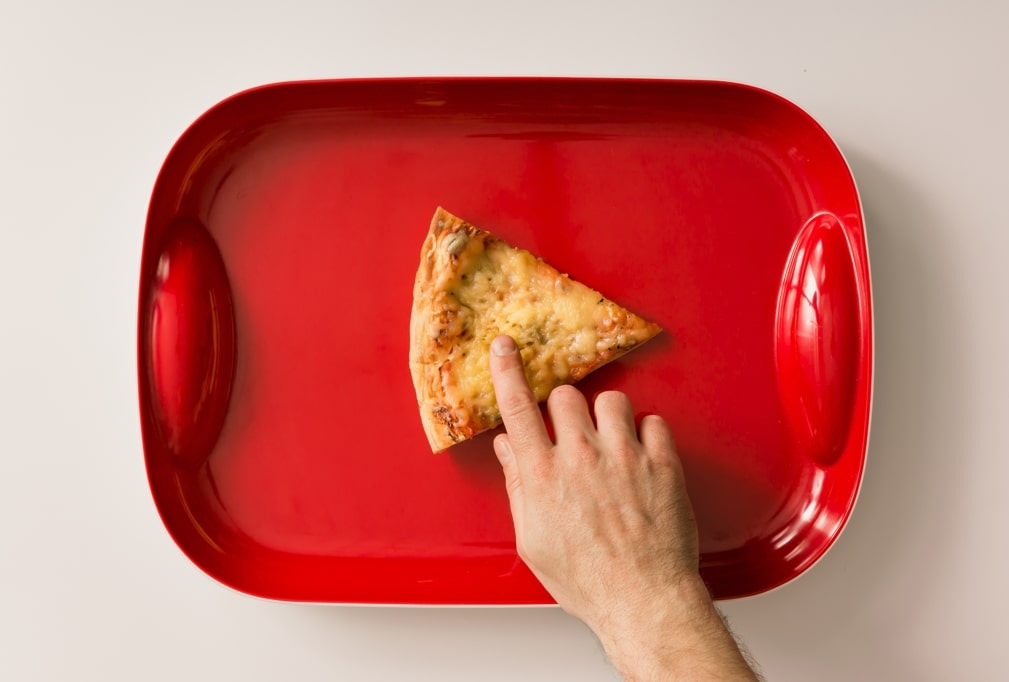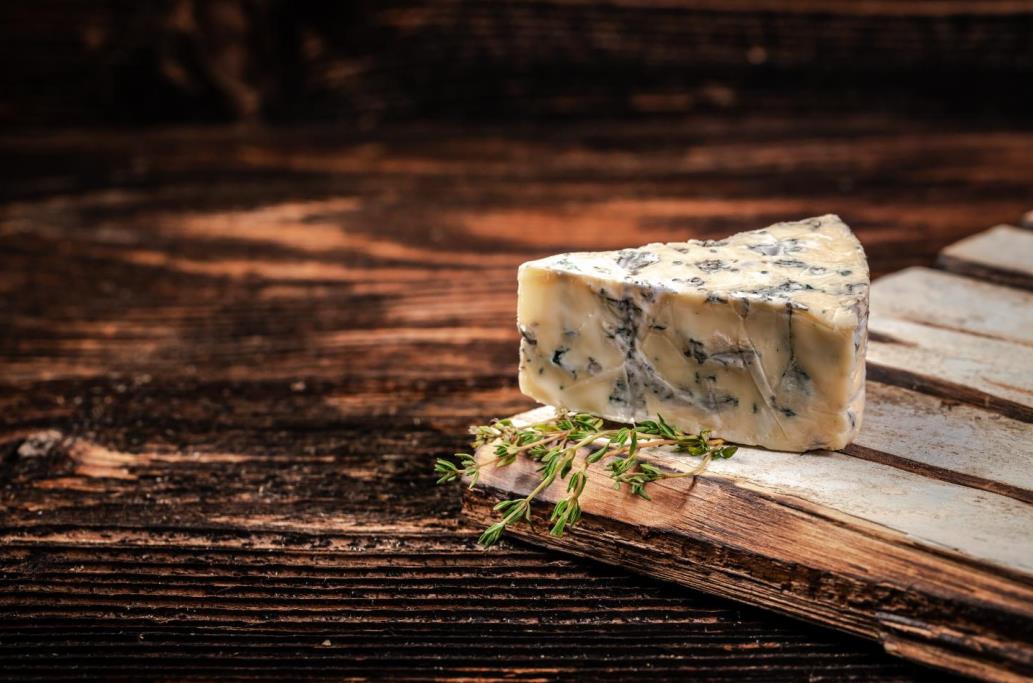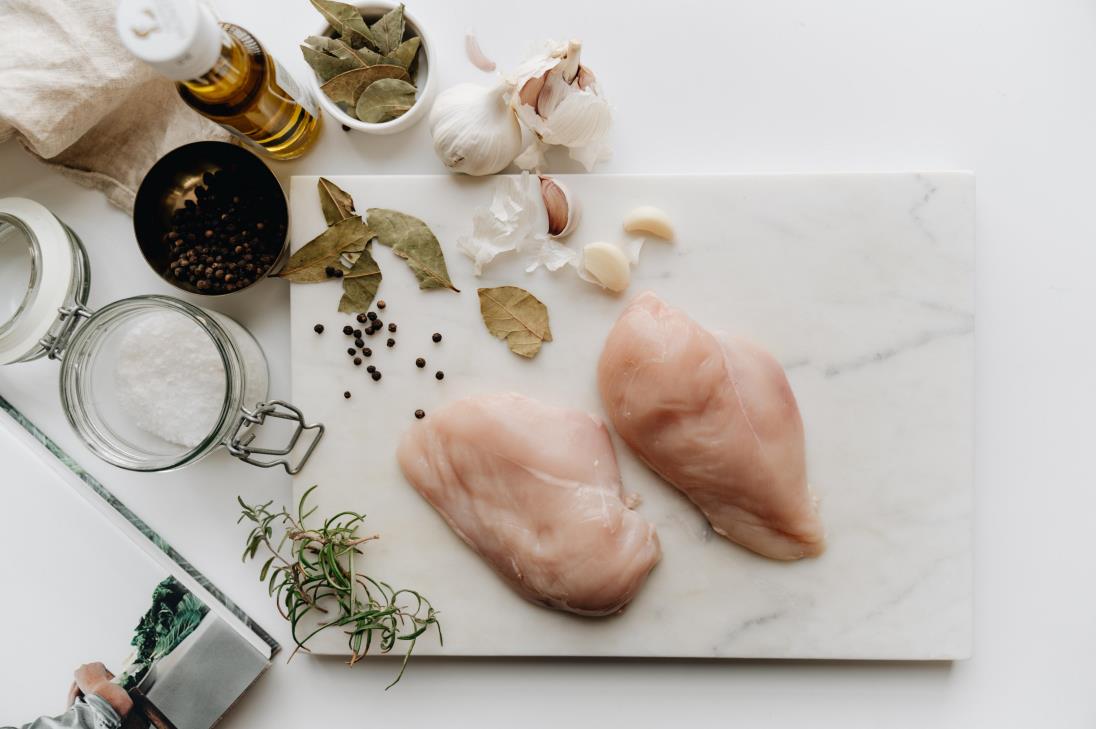Many people prefer wooden cutting boards to plastic versions. Not only do they look good, but they are soft and less damaging to your knife blades. There are concerns about the safety of wooden boards, especially for preparing meat. A wooden cutting board is perfectly safe but needs special care to remain in good condition for years.
Start cleaning your wooden cutting board by brushing off any remaining food particles. Using hot water, soap, and a sponge, scrub both sides of the cutting board thoroughly. Afterward, wipe away any excess liquid with a clean towel and allow the board to air-dry. You can then use white vinegar or salt and lemon to remove bad smells. Additionally, you can sanitize your board using bleach.
Cleaning is not the only important part of maintenance. If your wooden board is dry, you should moisturize it with oil and then seal it with wax. Doing so will protect the wood against water damage and bacteria. A dry board is not flexible and thus more likely to crack.
You do not need to work on your board every day to maintain it well. Aside from frequent cleaning, you can occasionally use the other methods in this article to give your wooden board new life. We will cover everything step-by-step and show you other maintenance tips and mistakes to avoid.
Table of contents
Why should you clean your wooden cutting board regularly?
Cleaning is necessary for your cutting board as with all other utensils. If you fail to clean your board soon after use, bacteria could rapidly spread around your kitchen if someone touches it. This is especially true after preparing meat. If food has stained the cutting board, the stains will be easier to remove if you act fast.
A wooden cutting board must be properly cleaned between preparing different dishes. Not doing this will cause flavors to mix and could also contaminate your food. Once again, be especially careful after cutting raw meat or fish. As a rule, only cut ingredients on a board that is fully clean and dry.
Some varieties of wood indeed have antibacterial properties, though that does not mean they will automatically kill any bacteria that touches them. As the owner, it is your job to help your board stay clean. If you only have one cutting board, it is even more crucial to clean and maintain it. If it is dirty or damaged, there is no backup.
Methods to clean your cutting board
How to wash a wooden cutting board
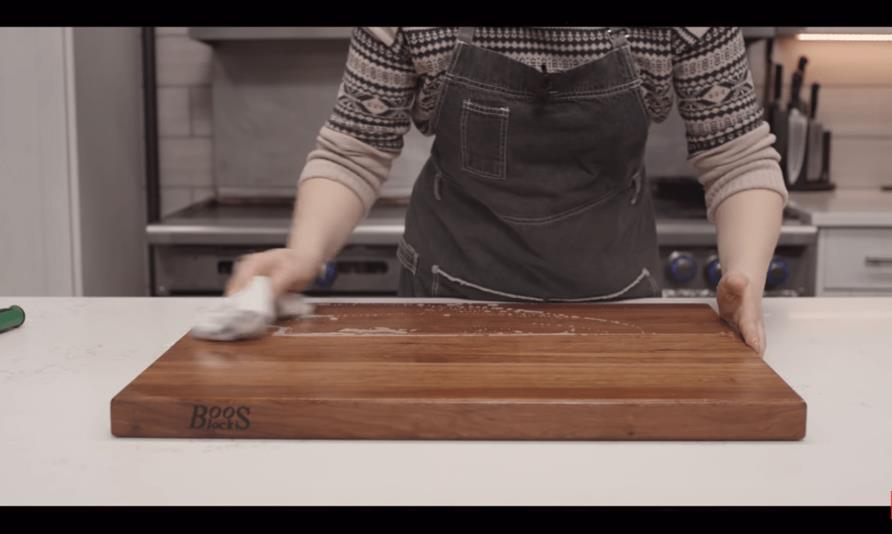
- Remove excess food particles with a paper towel. If you have been cutting plain bread, cakes, or pastries, you can simply brush the crumbs off and the board will be clean enough. There is no need to perform the next steps.
- If there are pieces of food or stains that you cannot take off, loosen them with baking soda and water. Rub this into a paste with a sponge to remove the stains and continue to the next step.
- You can get hot water either from your kettle or your tap. Completely soak the board by pouring hot water on both sides.
- Place some dish soap onto a soft sponge and rub each side of the wooden cutting board (wear rubber gloves!), making sure that you don’t miss any spots. This, combined with the hot water, should totally disinfect the board.
- Rinse the board again to wash away the soap.
- Wipe the soaking wet cutting board with a clean towel. At this point, it will still be damp, so leave it to dry slowly by resting it on its edge.
How to disinfect a wooden cutting board
Disinfecting a board can never replace thorough cleaning. Think of this as an extra precaution you can use from time to time.
The first disinfection method involves bleach. Fill a spray bottle with water and a few drops of bleach to create a diluted bleach solution. Spray the board a few times with this solution and leave it to dry. You can then rinse the board with hot water and soap
Another useful substance is hydrogen peroxide. This chemical can usually be bought in concentrations of 3-10%. For your cutting board, you should try to find the 3% solution which is not too strong.
Pour some hydrogen peroxide onto the cutting surface and spread it around with a sponge or paper towels. After a few minutes, it will have dried, at which point you can wash the board as explained above.
Handpicked for you
True cutting power in the palm of your hand
Remove unwanted odors with lemon & salt
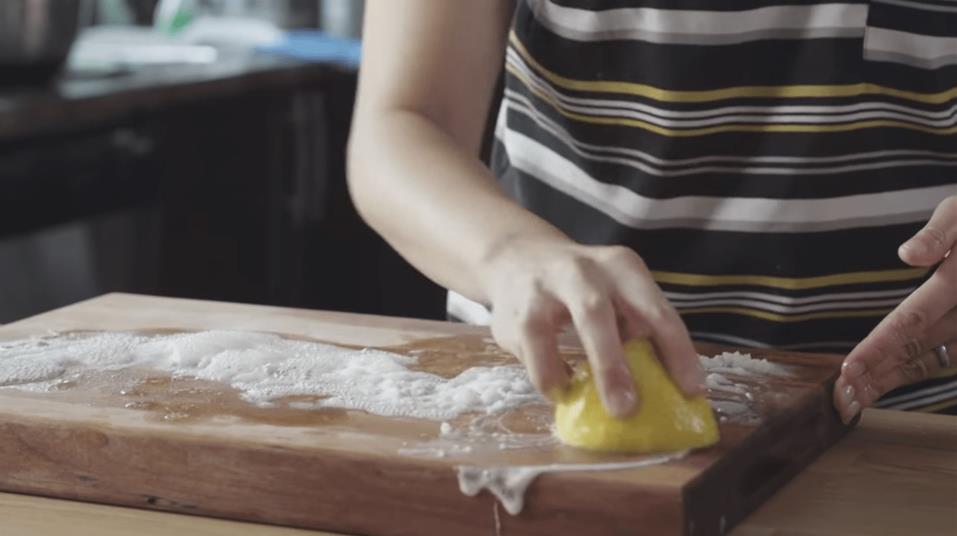
Even after washing and disinfecting your wooden board, it can still pick up bad smells through lots of use. Here is a simple remedy to improve the smell in no time. All you need is a couple of simple household ingredients: lemon and kosher salt. Kosher salt is a coarse salt but if you have none, table salt will do.
- Cover one side of your cutting board with a few tablespoons of salt.
- Next, squirt lemon juice on the board. Depending on the size of the board, you may need the juice from one or two halves of the lemon.
- Use one of the lemon halves to rub the salt and juice into the board. The mixture should turn into a thick paste. If it is too dry, add a bit of water. Some woods are softer than others, so be careful not to scrub too hard.
- After spreading the paste around the cutting surface, leave the board to dry. When the drying is complete, clear the remains of the salt and lemon from the board.
- If the other side of the board smells bad, you can repeat steps 1-4 for that side.
- Finally, wash and dry the board as described at the start of this section.
Remove unwanted odors with vinegar
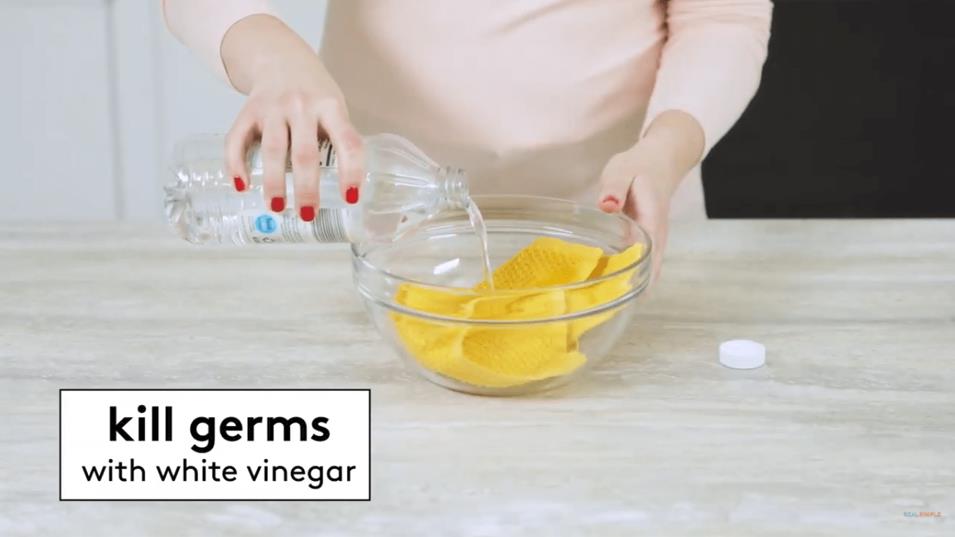
White vinegar is significantly stronger than normal types of vinegar due to its high acid content ― do not confuse it with white wine vinegar. It is not safe for consumption and is mainly meant for cleaning. This is how you can use it to make your wooden board smell better:
- Put some white vinegar into a spray bottle and dilute it with water in a 1:3 ratio.
- Spray the surface of your board with the mixture and leave it to dry for a few minutes.
- Ironically, after trying to remove bad odors with this method, your board might smell strongly of vinegar.
- When the vinegar has dried, wash the board with hot water and soap to eliminate the smell of vinegar. Then you simply let it dry again.
How to oil & wax your cutting board
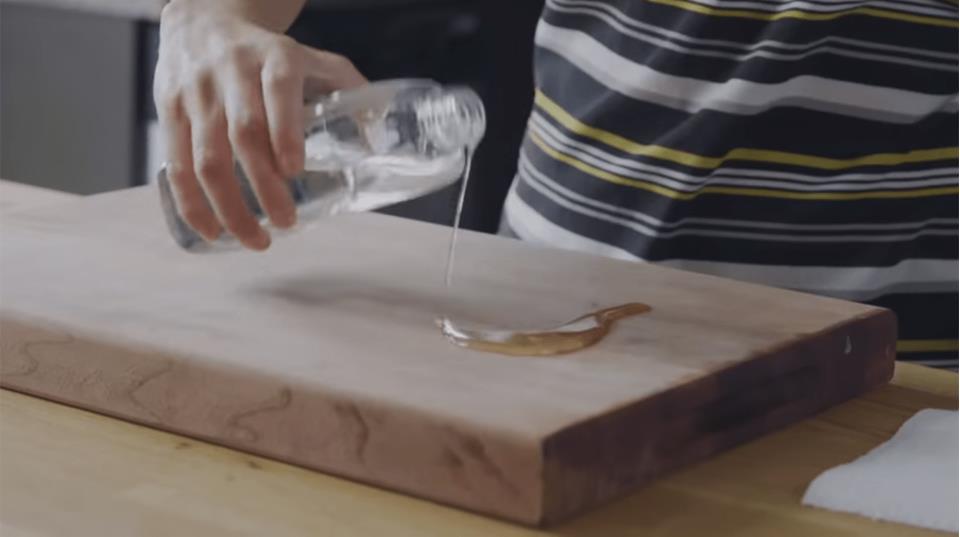
A guaranteed way to protect your wooden board and make it last longer is by moisturizing it with oil and then sealing it with wax. The wood can become dry through frequent cutting, washing, and drying. You only need to apply oil and wax when you feel that your board is dry ― once per month might be a good schedule.
The purpose of the oil is to penetrate the pores of the wood and hydrate it from within. When this happens, the wood is no longer brittle or dry and is unlikely to crack. Applying wax afterward will seal the surface of the wood so that the oil cannot escape and the wood will stay hydrated for longer. The wax also acts as a barrier to bacteria. Here is the process:
- Take your clean (yet dry) cutting board and generously pour oil on the surface. The best choice is food-grade mineral oil. Olive or vegetable oil will leave a bad smell.
- Spread the oil around both sides of the board with a fresh cloth or paper towel until the whole surface is coated.
- Stand the board on its side and leave it to dry for at least a couple of hours and ideally overnight.
- After the drying period, wipe off any oil that has not been absorbed by the board with another paper towel.
- Next, you need a food-safe wax to seal the oil. Put a small amount onto a paper towel and rub it thoroughly into the wood. Continue to apply small amounts until you have sealed every part of the surface.
How to maintain your wooden cutting board
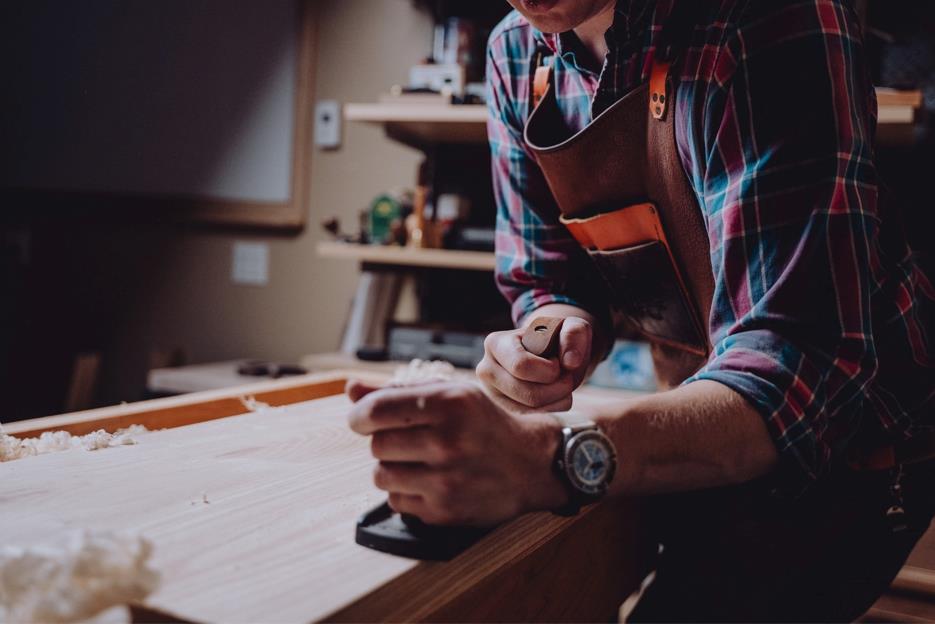
After cleaning your cutting board, removing odors, and sealing it, you might wonder what else you can do. No matter how careful you are with your board, the wood will become scratched eventually. These scratches are difficult to clean and are a possible breeding ground for bacteria.
Instead of replacing your board, you can try and extend its life by removing the scratches through sanding.
- Start with coarse sandpaper ― this has a low grit and will remove most material. Wrap it around a sanding block or small box.
- Next, press firmly into the wood and rub back and forth along the grain in the scratched areas.
- When the scratches have disappeared, the wooden surface will no longer be flat. Therefore, you must sand the non-scratched areas as well to ensure that the entire board is level.
- After using coarse sandpaper, the board will be flat but rough. To regain the smooth finish of the brand new board, switch to higher-grit sandpaper. Sanding with this will remove less wood but will successfully refine the surface.
- When you are satisfied with the wood’s smoothness, wipe off the loose particles and wash the board thoroughly.
Mistakes to avoid
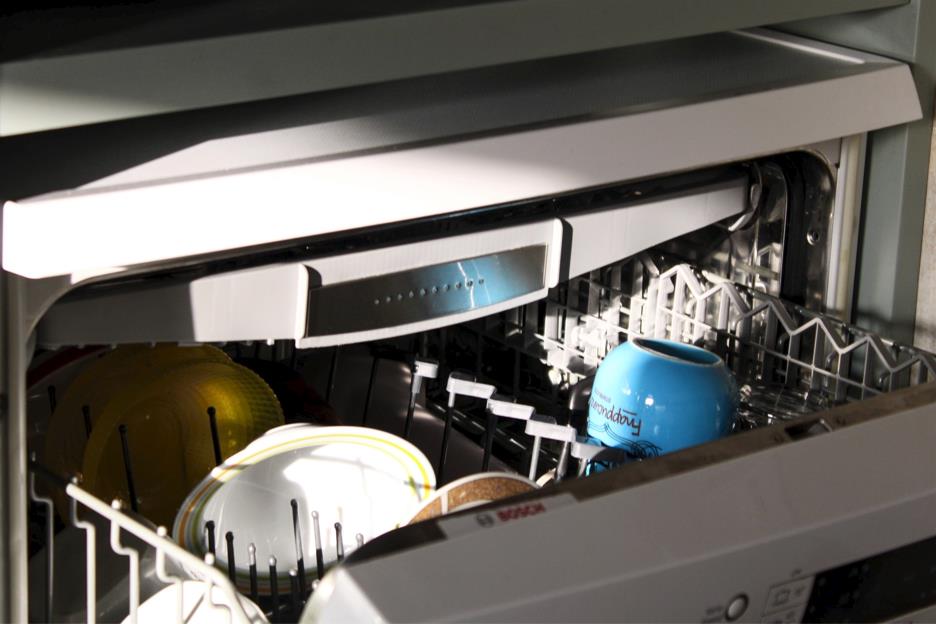
So far, we have focused on things that you should do to your cutting board. Now we will mention some things you should avoid for the benefit of your wooden board.
- Do not put your wooden board in a dishwasher. Being in a hot and wet environment for too long is bad for the wood and can warp or even crack it. However, dishwashers are fine for plastic boards.
- Wash both sides of your board to ensure even drying. If you do not, the temperature difference could distort the wood.
- When you have washed the board, you must not lay it flat to dry. That is because water will collect on the bottom side of the board. If it is resting on an unclean surface, the wet environment will promote bacterial growth and make the wood dirtier than before you washed it.
- If the board splits or cracks, your best option is to replace it. Specialist repairs will not always work and can be pricey. Even if the wood is of great quality, you will save time and money by purchasing a new board.
A solid wooden cutting board deserves a sturdy knife
After working hard to keep your wooden board in top condition, you should reward yourself with a high-quality knife. Our company specializes in hand-forged carbon steel knives that effortlessly chop ingredients on any surface. Browse our selection here.








